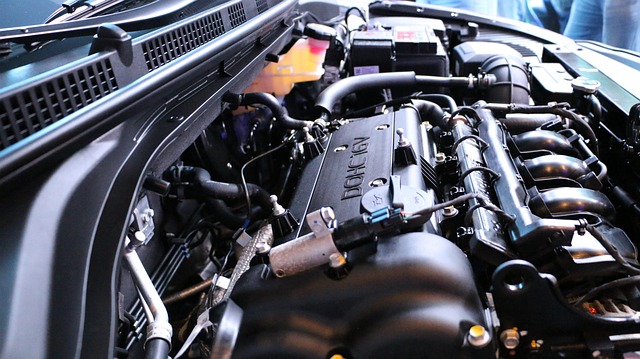Looking to register your car in California? This comprehensive guide breaks down the process step-by-step. From understanding key requirements to gathering essential documents, you’ll learn how to navigate the process efficiently. A crucial part is performing a Vehicle Identification Number (VIN) verification, ensuring vehicle authenticity and compliance. We’ll guide you through choosing the right registration method and completing the application with associated fees. Follow these steps for a smooth California car registration experience.
- Understand California Vehicle Registration Requirements
- Gather Necessary Documents for Car Registration
- Perform VIN Verification: Steps and Importance
- Choose an Appropriate Registration Method
- Submit Application and Pay Fees for Car Registration
Understand California Vehicle Registration Requirements

Before registering your car in California, it’s crucial to understand the state’s specific requirements for vehicle registration. One critical step is ensuring accurate and up-to-date information, starting with a thorough vin verification. The Vehicle Identification Number (VIN) is a unique code that identifies your car, and its validation is essential during the registration process. California requires this number to be verified against the manufacturer’s records to ensure the vehicle’s authenticity.
A mobile vin verifier or mobile vin inspection can simplify this process by allowing you to conduct the verification from the convenience of your location. This digital solution enables quick cross-reference of your VIN with state databases, ensuring all details are correct and up-to-date. By adhering to these guidelines and utilizing available technology like mobile vin verifiers, you’ll streamline the car registration process in California.
Gather Necessary Documents for Car Registration

Before you start the registration process, ensure you have all the essential documents ready. The California Department of Motor Vehicles (DMV) requires a range of paperwork for car registration, and having them in advance streamlines the procedure. One critical document is the Vehicle Identification Number (VIN) verification report, which establishes the vehicle’s authenticity and history. This can be obtained through various methods, including a traditional VIN inspection at a certified location or by utilizing mobile vin verification services that provide convenient and often instant digital reports.
Additionally, you’ll need your car’s title, a valid driver’s license or state-issued ID, proof of insurance, and perhaps the most important, your personal information such as name, address, and Social Security number. Some documents may be available online, while others require in-person visits to official agencies or authorized service centers, so it’s beneficial to check the DMV’s website for a comprehensive list of requirements tailored to your specific circumstances.
Perform VIN Verification: Steps and Importance

Performing a Vehicle Identification Number (VIN) verification is a crucial step in the car registration process in California. This involves cross-referencing the VIN with a national database to ensure the vehicle’s history and specifications match what’s declared by the owner. It’s an essential safety measure designed to prevent fraud, theft, and the sale of vehicles with altered or hidden histories.
To conduct a VIN inspection, you can either visit a California Department of Motor Vehicles (DMV) office or utilize a mobile vin verification service. Mobile vin verifiers offer a convenient option, allowing you to complete the check quickly and often from the comfort of your home or workplace. This step is vital before registering your vehicle as it safeguards both consumers and law enforcement by ensuring that vehicles on California’s roads meet safety and legal standards.
Choose an Appropriate Registration Method

When registering your car in California, choosing the right registration method is key to a smooth process. Two popular options are available: in-person or online. For added convenience and speed, many opt for an online registration approach, which typically involves inputting your Vehicle Identification Number (VIN) for verification. This initial step ensures that your vehicle’s details match those on record with the California Department of Motor Vehicles (DMV).
A mobile vin verification service can be particularly useful here, allowing you to confirm your VIN’s authenticity from the comfort of your home or even while on the go. This method streamlines the preparation process and helps prevent potential errors before submitting your registration application. It’s a smart step that contributes to a more efficient overall experience.
Submit Application and Pay Fees for Car Registration

To complete the car registration process in California, you’ll need to submit an Application for Title and Registration (Form DV-140). This form is available online or from any California Department of Motor Vehicles (DMV) field office. Fill it out completely, ensuring all information is accurate and up-to-date. Along with your application, you’ll be required to pay several fees, including a registration fee, vehicle weight fee, and potentially others based on your vehicle’s type and age.
Once your application and payment are ready, submit them to a DMV field office or, for added convenience, utilize the Department of Motor Vehicles’ (DMV) online services or mobile app. If you opt for a mobile vin inspection or vin verification service, this step can be completed remotely, allowing you to verify your vehicle’s history and ensure all necessary documents are in order before submitting your application.
Registering a car in California involves understanding key requirements, gathering essential documents, and completing necessary steps like VIN verification. By following these straightforward procedures—from collecting paperwork to choosing the right registration method—you can efficiently navigate the process, ensuring your vehicle is legally registered and ready to hit the road. Remember, proper registration not only complies with state laws but also protects your investment and facilitates smoother driving experiences.



